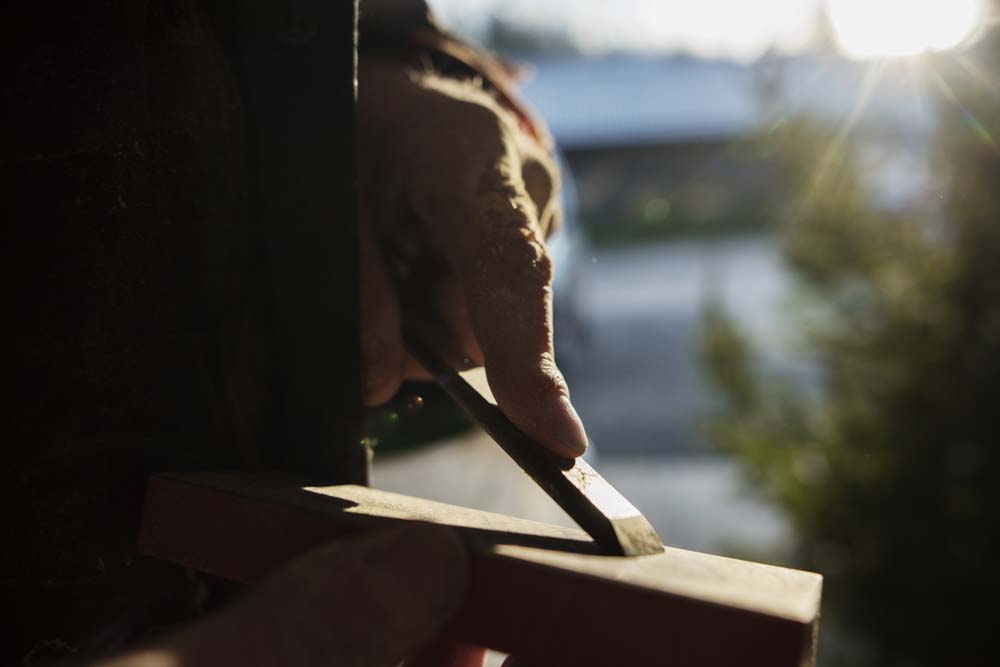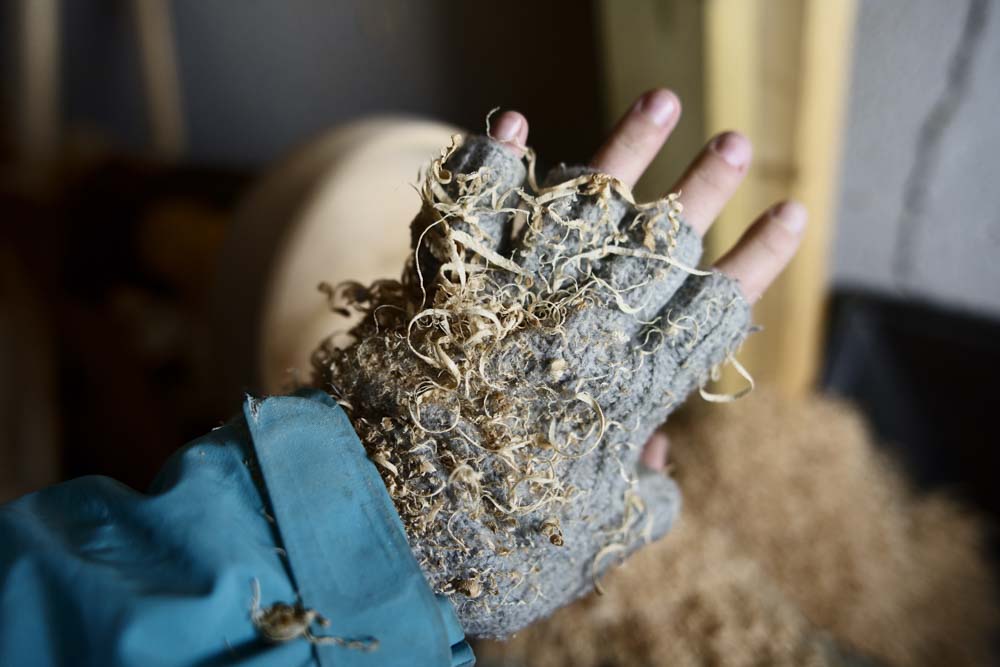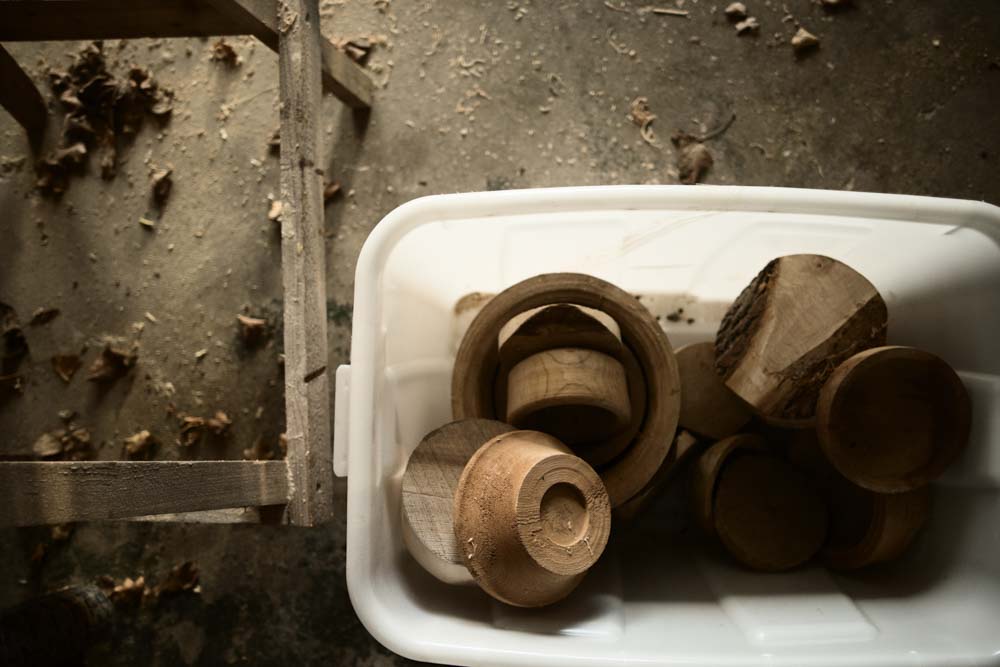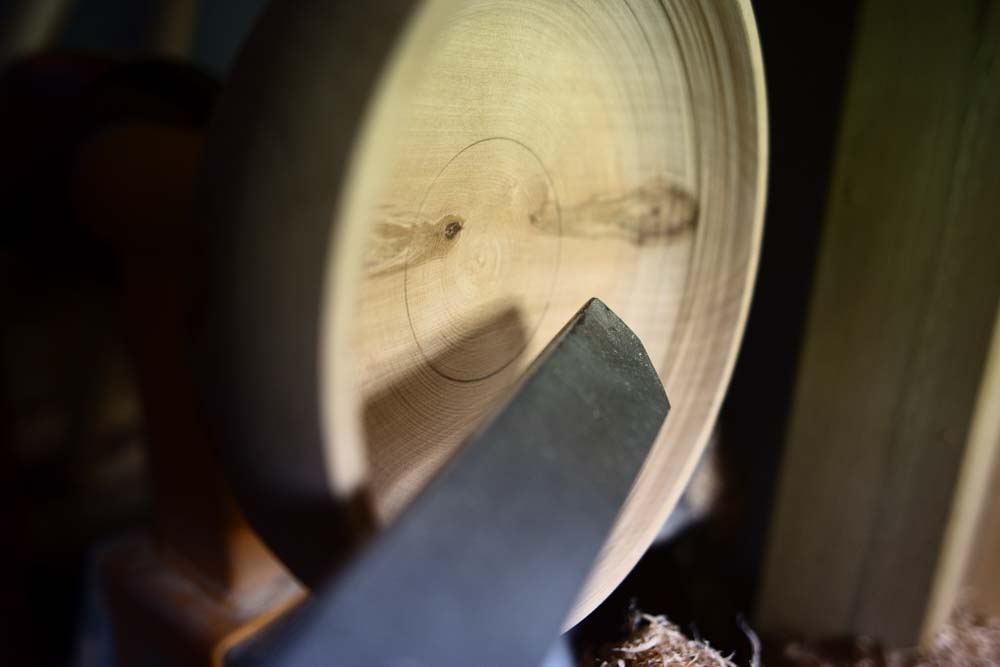Slow session 1: Turning wood

Cold air filled the small space, making the tools freezing cold and the lathe (machine that turns the wood) would only start after we had manually turned the head a few times. It was a perfect low sun that lit up the room with a pale light. My Dad; Kåre has turned wood and made things from wood for as long as I can remember. The smell of chainsaw fuel and sawdust immediately takes me back to my childhood. I had never tried to turn a bowl myself, but over the course of two cold days, I made my first attempt.
Happy Thea with her homemade bowl.
Starting my first wood turned bowl
I knew the principe of turning wood, shaping the material, using a gauge or curved knife, but it was something very different to actually try it myself. You start out by making the piece of wood smooth, round and even. This was not easy. It was hard work, with a lot of splinters flying and a lot of noise. There was resistance in the wood and the power of the machine was strong. There were a few incidents where I got the edge of the gauge stuck in the wood and the machine stopped. This felt quite intimidating and was actually a bit scary, feeling the the gauge jump in my hand. The machine stopping and the smooth spinning sound transformed to a crashing-like sound. It sounded like destruction, but the reality was not so bad, it took Kåre ten minutes to shape it back to the way it was. Only nicer.
Sawdust and half finished bowl. This is not my bowl, it is one of Kåre's projects.
It's a good feeling, creating something with your hands.
This post is not a how-to on turning wood. Personally I don't know enough to teach anybody about turning wood. What I want to talk about in this post is the feeling of trying a new craft. Creating something as special as a wooden bowl was a great feeling. Humans have made wooden bowls for hundreds of years. It felt like I just stepped into the queue behind millions of other bowlmakers and their bowls. It is something special about both the function, shape and material when it comes to wooden bowls. Creating a shape in wood is hard work, but at the same time it is soft and willing. And it smells good. Especially in cold air when there are no other smells distracting you.






Local Beeswax
At the end of the two days I was covered in a thin layer of sawdust and was proudly ready to finish my bowl. The last step was to impregnate the wood. There are many ways to do this, but we chose to keep the bowl as natural as possible and only melt in a layer of beeswax to protect the wood. I am very happy to know a beekeeper in Trondheim and luckily I had some local beeswax with me. We applied my friend's beeswax by holding it firmly on to the bowl as it spun, friction melting the wax slowly into the wood. What a fantastic smell of warm wood and honey!
Beeswax from Bieffekten in Trondheim Norway.
Become aware of learning opportunities and seize them.
Learning something new to do with your hands is in my opinion usually a good idea and my dad's fascination for wood and wood turning has always been there. So it is natural that he would teach me at some point. The opportunity had always been there for me to learn, but I still didn't do it until I was 28! I believe the reason we finally made the wood turning session happen had something to do with our slow adventures over this last year. Me becoming more aware of the opportunities around me. Taking advantage of them to learn something new.
I most certainly did not know that there was something new to discover in my dad's garage!
My finished bowl! Perfect for fruits on healthy days and even better for sweeties or crisps on cozy weekends.








